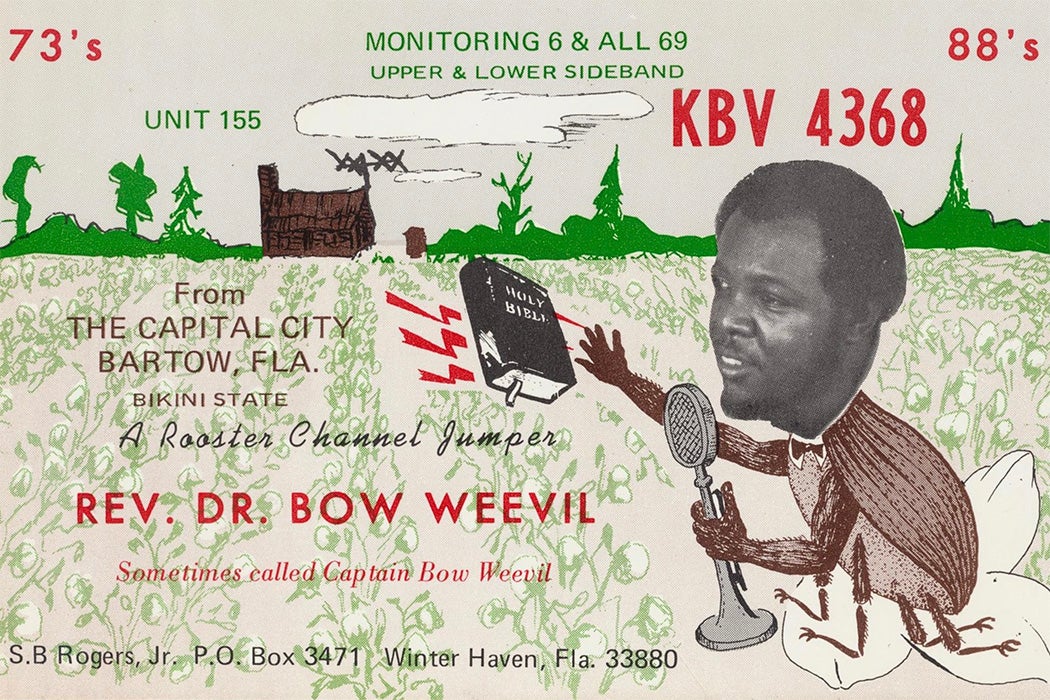The citizens’ band (CB) radio was a popular car accessory in the 1970s. As historian Art M. Blake explains, magazines like Newsweek and Car and Driver featured full-pages ads for the two-way radio device. There was one area that, at first glance, may have missed the trend— the Black media. Looking through popular Black magazines of the day, Blake writes, “one might get the impression that CB was not part of black culture, that the fad had not hit black America.” But the CB radio was a powerful tool in organizing and community that “created a system of mobility far removed from, and in opposition to, that of the white “good buddies” talking into their radios as they cruised America’s roadway.”
Established by the FCC in 1945, the citizens band made communications between drivers “cheaper, more reliable, and convenient” than ever before, researchers Tyler Watts and Jared Barton explain. CB users were required to be licensed, and if license numbers were any indication, the radio was a hit with “approximately 800,000 licensed CB users during the 1966-73 period” and 12,250,000 by the end of 1977. There were also approximately 10 percent of users who were unlicensed. While the main users and buyers were truck drivers who were using it “to advise one another about the whereabouts of state police and low diesel prices,” Black CB users had a history, and community, that predated the fad.
According to Blake, Black CB users were active as early as 1959 with the founding of the Rooster Channel Jumpers, a network of Black CB users across the US. The club had chapters in major cities in the north, south, and east, and “a formal governance structure at every level, and blue and gold uniforms for its members.” In 1978, about 10,000 Rooster Channel Jumpers met in Dallas for the club’s annual convention, where the keynote speaker urged Black CBers to “join together in a national black radio operators organization to promote the use of CB channels specifically for black economic organizing and mutual benefit.”
Black CBers were already experimenting with the radios as a form of organizing— although in ways that weren’t exactly government sanctioned. The plans expressed at the convention, “clashed with their regular flouting of FCC regulations to achieve the distinct social and communications goals of black CB radio practice,” Blake explains. Black CBers regularly used their equipment to engage in a practice known as “shooting skip.” This allowed the signal to go much further than the 150 mile limit the FCC permitted citizens band radio. This network of CBers created an “invisible and mostly unsurveilled communications network.” Black CBers created a community of voices that not only helped connect them to one another, but organized against racist violence.
Weekly Newsletter
CB use spread everywhere, including to hate groups. The Ku Klux Klan began using the radios to “organize their racial terror activities by reporting to each other on the whereabouts of law enforcement or of their latest targets,” and Black CBers responded. One organization, the Deacons for Defense and Justice based in Jonesboro, Louisiana, used CBs to “ensure a rapid response to any apparent or real threat” to Black residents and civil rights workers.
Black CBers created what Blake calls “an audible black geography.” Everything from the slang they used to the ways they organized positioned Black CBers as “a process of tuning in, with great skill, to an invisible disembodied shared blackness, a shared black sound, and a black technoculture.”







